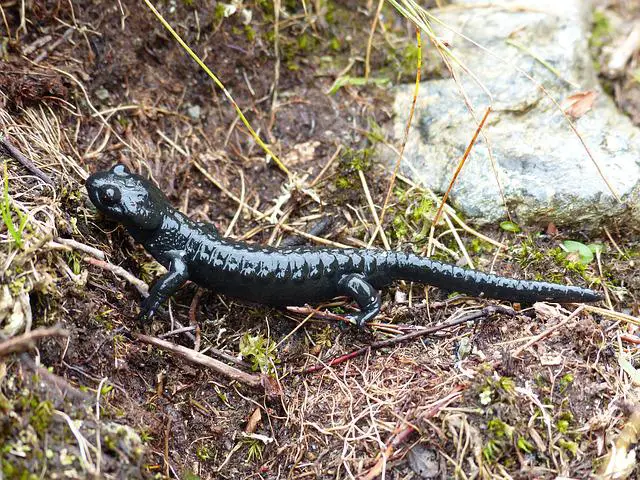Salamanders are a type of amphibian that can be found all over the world. There are many different species of salamander, and some of them are poisonous. If you are planning on hiking in an area where salamanders live, it is important to know which ones are poisonous so that you can avoid them. In this blog post, we will discuss the different types of poisonous salamanders and how to identify them.
Introduction
Salamanders are a group of amphibians that includes newts and lizards. Many salamanders are brightly colored, which has led to the belief that they are poisonous.
In fact, only a few species of salamander are poisonous to humans.
The most well-known of these is the fire salamander, which is found in Europe. The poison glands of the fire salamander produce a substance that is deadly to humans if inhaled or ingested.
Another poisonous salamander is the Chinese fire-bellied newt, which is found in Asia. The poison glands of this species produce a substance that can cause severe skin irritation. Fortunately, there is an antivenom available for both of these species.
However, it is important to note that not all salamanders are poisonous to humans. In fact, many species are harmless and even beneficial to our ecosystems.
How to identify the poisonous salamanders
Poisonous salamanders are often brightly colored, with patterns that stand out against their skin.
This is an evolutionary adaptation known as aposematism, which warns predators that the salamander is toxic and not worth eating.
Some species of salamander also have a noticeable scent that can help to repel would-be predators.
Additionally, poisonous salamanders tend to have stout bodies and small heads, with relatively short legs.
When in doubt, it is best to err on the side of caution and avoid handling any salamander that you cannot positively identify.
If you do come into contact with a poisonous salamander, immediately wash the area with soap and water to remove any toxins that may have been transferred.
How is the salamander poison passed on to humans?
Salamander poison can be passed on to humans in a number of ways.
The most direct way is through contact with the skin. If the poison gets on your skin, it can cause irritation and burning. In some cases, it can also cause blisters. If the poison gets into your eyes, it can cause blindness.
Inhaling the poison can also be dangerous. The poison can damage your respiratory system and cause difficulty breathing.
Finally, ingesting the poison can lead to organ damage and death. Salamander poison is a serious health hazard, and it is important to take precautions to avoid contact with the animal or its secretions.
What are the symptoms of salamander poisoning
Salamander poisoning is a relatively rare condition that occurs when someone comes in contact with the skin or poison of a salamander.
The most common symptoms of salamander poisoning include nausea, vomiting, and diarrhea.
In more severe cases, salamander poisoning can cause seizures, respiratory paralysis, and even death. While the risk of coming in contact with a poisonous salamander is low, it is still important to be aware of the potential dangers.
If you think you or someone you know may have been poisoned by a salamander, it is important to seek medical attention immediately. Salamander poisoning can be serious and even fatal if not treated promptly.
Is there an antidote for salamander poison
There is no known antidote for salamander poison. Symptoms of salamander poisoning include vomiting, diarrhea, convulsions, and respiratory distress. If you think you or someone you know has been poisoned by a salamander, seek medical attention immediately.
Treatment for salamander poisoning is typically supportive and symptomatic. There is no specific antidote, so treatment focuses on managing the symptoms and supporting the patient’s respiratory and cardiovascular systems.
Salamander poison is a serious medical emergency, so if you think you or someone you know has been exposed, don’t delay in seeking help.
How to avoid salamander poisoning
Salamanders are a type of amphibian that can be found in damp environments all over the world. Although they are relatively harmless creatures, they can be poisonous if ingested. Salamander poisoning typically occurs when people eat raw or undercooked or come into physical contact with them. The toxins in their skin and organs can cause nausea, vomiting, and diarrhea. In severe cases, salamander poisoning can lead to organ failure and death.
To avoid this, it is important to cook salamanders thoroughly before eating them. Boiling or baking Salmanders for at least 15 minutes will neutralize the toxins and make them safe to eat. It is also important to handle them with care, as their toxins can be absorbed through the skin. If you come into contact with a salamander, wash your hands thoroughly afterward. By following these simple precautions, you can enjoy salamanders without risking your health.
Conclusion
Among the hundreds of extant species of salamanders, only a handful are known to be poisonous. The most notorious of these is the Chinese fire-bellied newt (Cynops Orientalis), which secretes a toxin that can cause severe burns if it comes into contact with human skin. However, this species is not the only one that produces toxins; the African River frog (Kassina senegalensis) and the European common newt (Lissotriton Vulgaris) are also known to secrete poisonous substances. While the toxins produced by these animals are not typically fatal to humans, they can cause serious health problems if ingested. As such, it is always best to err on the side of caution and avoid handling any salamanders that you are not familiar with.




